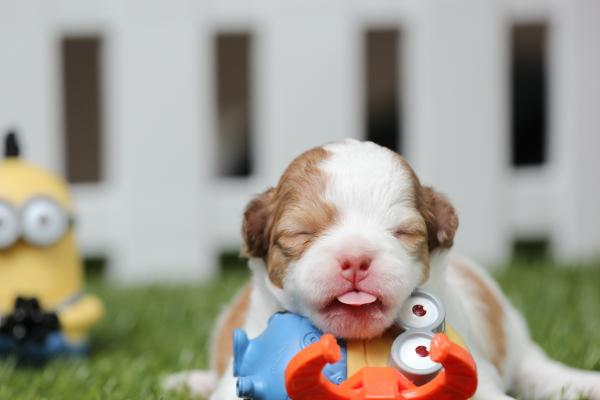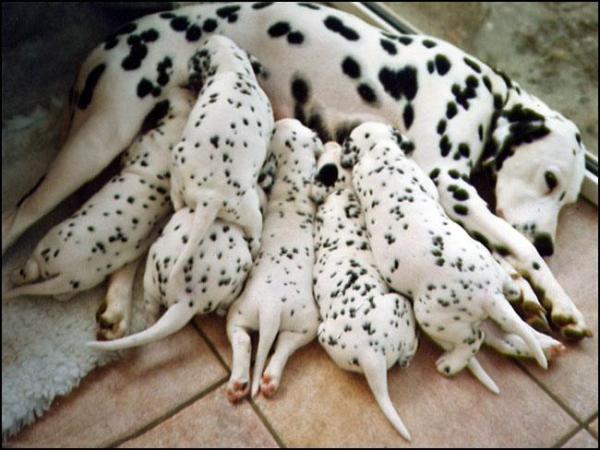Complications in Dog Labor



See files for Dogs
If your dog is pregnant, then it is vital you learn how to ensure they are well looked after. They will need more care and protection during this vulnerable time. Ideally you would have a vet on hand as soon as they start to go into labor. Unfortunately, the relatively short labor period in dogs means this is often impossible. You also don't want to move a dog in labor as it can cause them stress and affect the birth.
Most whelping situations (the word for dog births) will be smooth enough, especially if you have prepared for the occasion. Unfortunately, one of the most important things to prepare for is the possibility something may go wrong. Complications in dog labor can take various forms. This is why AnimalWised brings you some of the most common problems when a dog is in labor. While a vet may need to be called, having an idea of what might be going wrong and intervening can mean the puppies have a better start in life.
Major complications and problems when a dog is in labor
If we have spoken with a trusted veterinarian, we will give our dog the best chance of having an uncomplicated pregnancy. However, there are many unforeseen issues which can arise despite the best care. This is why it is always best to be prepared for any eventuality. We want both mother dog and puppies to be in the best health, so knowing what to do in an emergency situation is vital. Here are some of the common complications as well as rare problems which may arise during a dog's labor:
- Dystocia: this is perhaps more commonly known as obstructed labor which provides some explanation of the condition. The puppy cannot exit the birth canal without help due to either its placement or some sort of obstruction. The primary type of dystocia is when the puppy moves into a position whereby they become stuck in the canal. Secondary dystocia is when the birth's impediment is something other than the puppy itself. This could be for numerous reasons such as an intestinal obstruction reducing the size of the birth canal. It could also be that the mother's pelvis is too small, making the birth canal to narrow to pass the puppy through.
- Brachycephalic breeds: thanks to human intervention in dog breeding, some breeds have developed brachycephalic issues. These are problems with the respiratory and cardiac systems caused by malformations in the body, especially in the snout. Breeds like French Boxers, Bulldogs and Pugs are considered brachycephalic dogs and are more prone to birthing difficulties. It is common for these dogs to not be able to carry out labor without some sort of intervention. This is in part due to their inability to suffer the strain on their breathing and heart. Their larger sized heads in proportion to the rest of their body is also an issue. Usually it is a combination of the both as the head gets stuck in the birth canal and the mother is unable to push with enough strength to birth the pup. To avoid complications, it is common for these dogs to be scheduled for cesarean section at the veterinarian just before they would give birth naturally. This is one of the reasons it is so important to speak to your veterinarian.
- Amniotic sac and umbilical problems: unlike humans, puppies are born with their amniotic sac still intact. The mother breaches the sac with her teeth and then chews off the umbilical cord. Unfortunately, some dogs will be tired from labor or have health issues leading to their inability to make the breach. Ideally, a veterinarian will do this for us, but if one is not available, then we have to do it ourselves. It won't take much to make the break, but we should use clean implements and cut the umbilical cord carefully.

- Puppy cannot breathe: a mother dog will not only breach and chew the umbilical cord, but they will lick clean their pup. This helps to stimulate breathing. If the puppy is not breathing within about 6 minutes, it is likely to die. We can help stimulate the breathing by rubbing the puppy gently and not crushing or damaging them. It is better if a veterinarian does this as they will have the relevant experience. However, you may need to do it in a pinch.
- Reperfusion injury: this occurs when the puppy is out, but the mother dog has excessive bleeding. It is one of the less common complications, but also one of the most severe. The dog needs to be seen by a vet immediately.
- Uterine rupture: this is also a rare occurrence, but if it happens during whelping the lives of dog mother and puppies are in danger. It can happen due to the heavy weight of the puppies which exerts too much force on the mother's uterus. The uterus may not even become ruptured properly, but swelling can mean the birthing canal restricts and the puppy cannot be expelled. An emergency vet will need to be called.
- Cesarean and postoperative problems: as with any operation which involves anaesthesia there are potential complications. It is not usual, but infections can occur especially depending on the location of where the operation is carried out. Hemorrhages are also possible. After a cesarean section, there may be postoperative problems in terms of recovery. However, if the dog is in good health before the operation is carried out, then there is every chance of a speedy recovery.
- Diseases prior to whelping: if the dog is ill before the birth occurs, then complications can arise. This is because they may be in a wakened state and it can lead to the dog being unable to carry out the birth alone. If the dog is very ill leading up to the due date, speak to your veterinarian about possible options.

How to prevent whelping problems
The best way avoid complications during childbirth in dogs is to follow their pregnancy closely. You can do this by knowing the different stages of a dog's pregnancy. A dog's pregnancy will last around two months, so make sure to take them to see a veterinarian at least one month into the pregnancy to ensure everything is going well. Several tests such as ultrasounds and blood tests will likely be carried out as pregnancy examinations. It is very important to know how many puppies are on their way. This is because when it comes time for delivery, we need to be sure all puppies have been birthed and there isn't a stuck puppy which can endanger the life of mother and pup.
The moment we first see the signs of labor in our dog, we need to arrange everything we need. This includes clean towels, disinfectant for our hands, latex gloves, thread to tie the umbilical cord, sterilized scissors to cut it, oral syringes to help the puppies expel amniotic fluid (if necessary) and the number of an emergency veterinarian. This way, we should be prepared for any complications which may arise during pregnancy. However, it is equally important to understand that we should not intervene in a natural childbirth unless absolutely necessary.
If it is possible for a vet to be present, then this is ideal. It can be difficult as many dogs will give birth at night and this may mean they do not have availability.
This article is purely informative. AnimalWised does not have the authority to prescribe any veterinary treatment or create a diagnosis. We invite you to take your pet to the veterinarian if they are suffering from any condition or pain.
If you want to read similar articles to Complications in Dog Labor, we recommend you visit our Pregnancy problems category.








